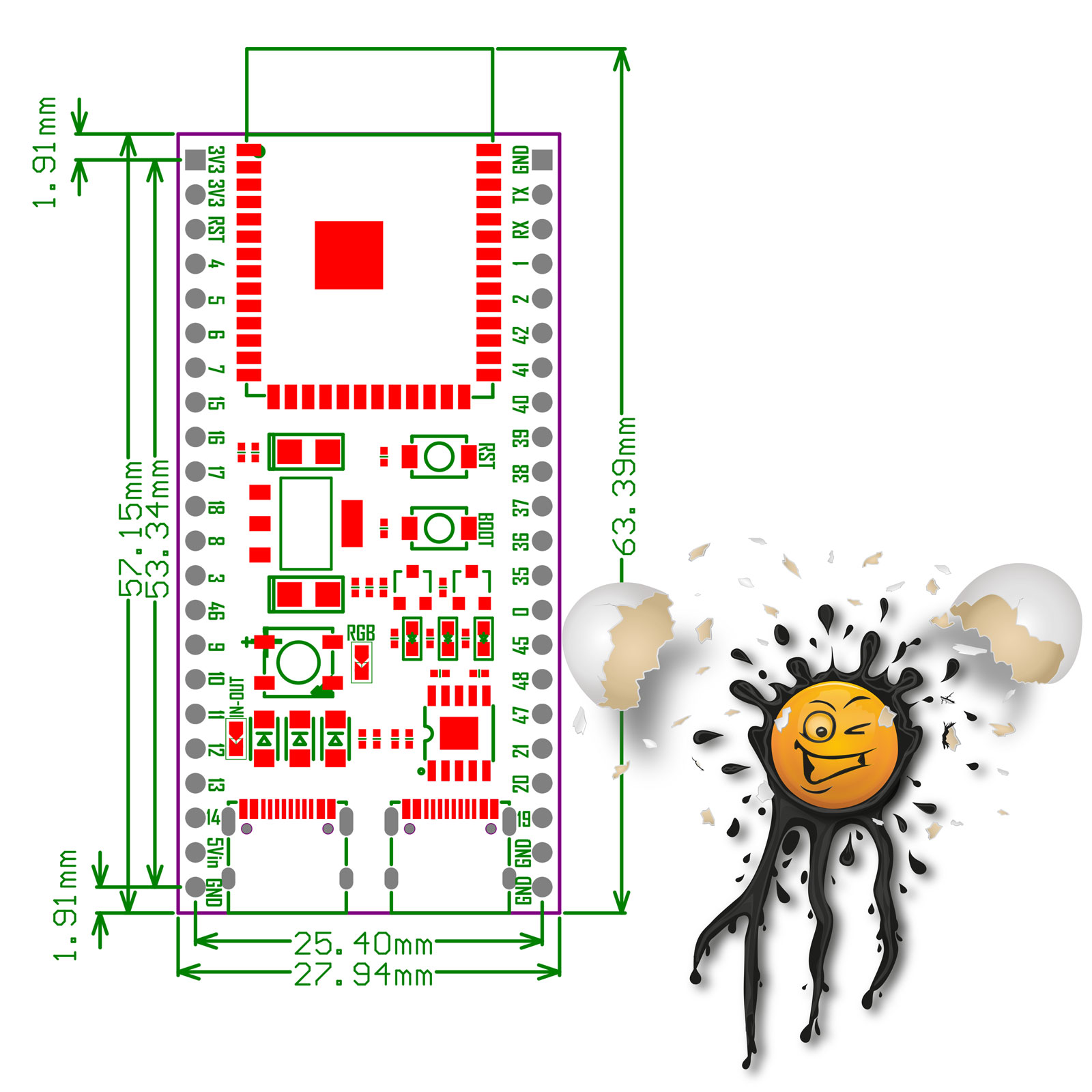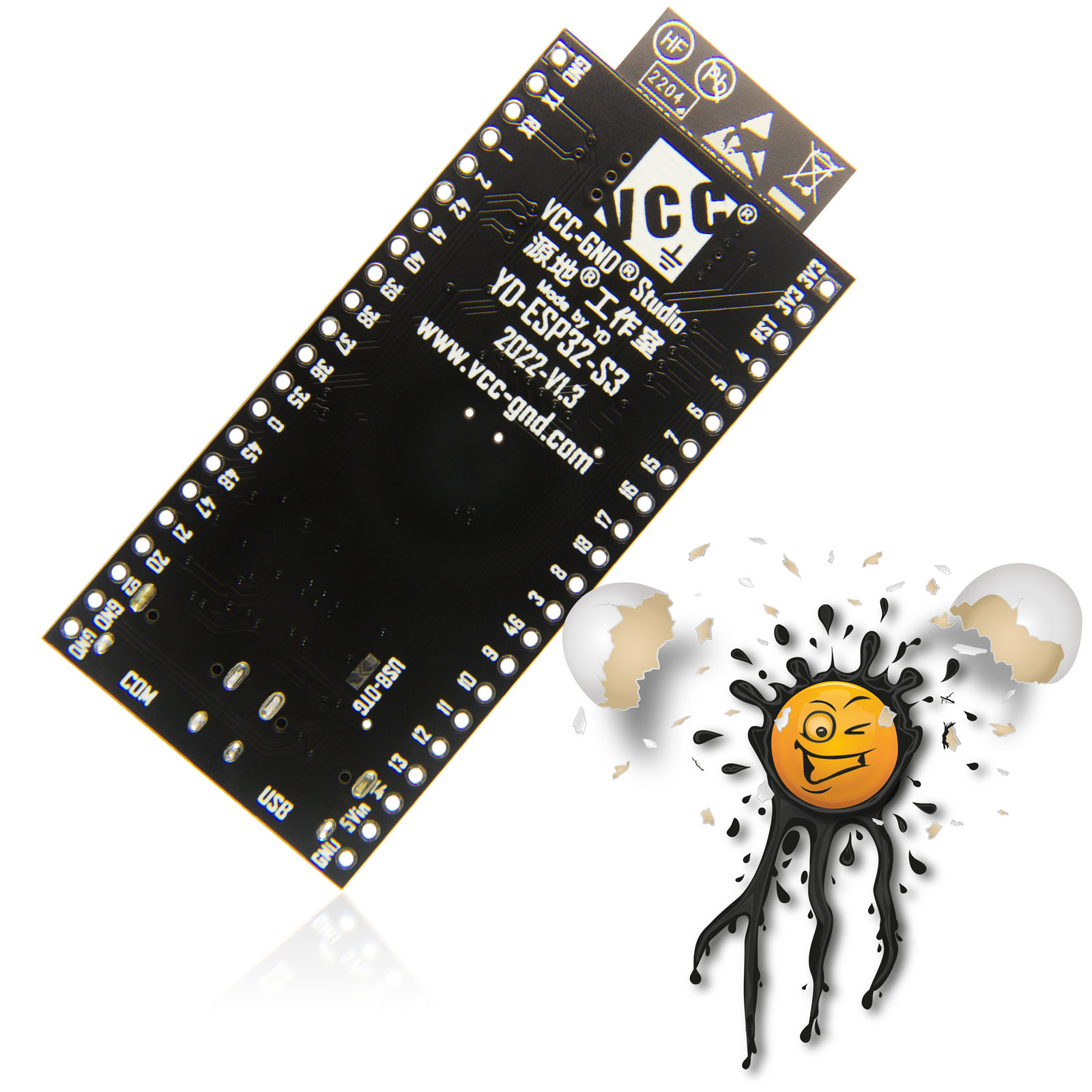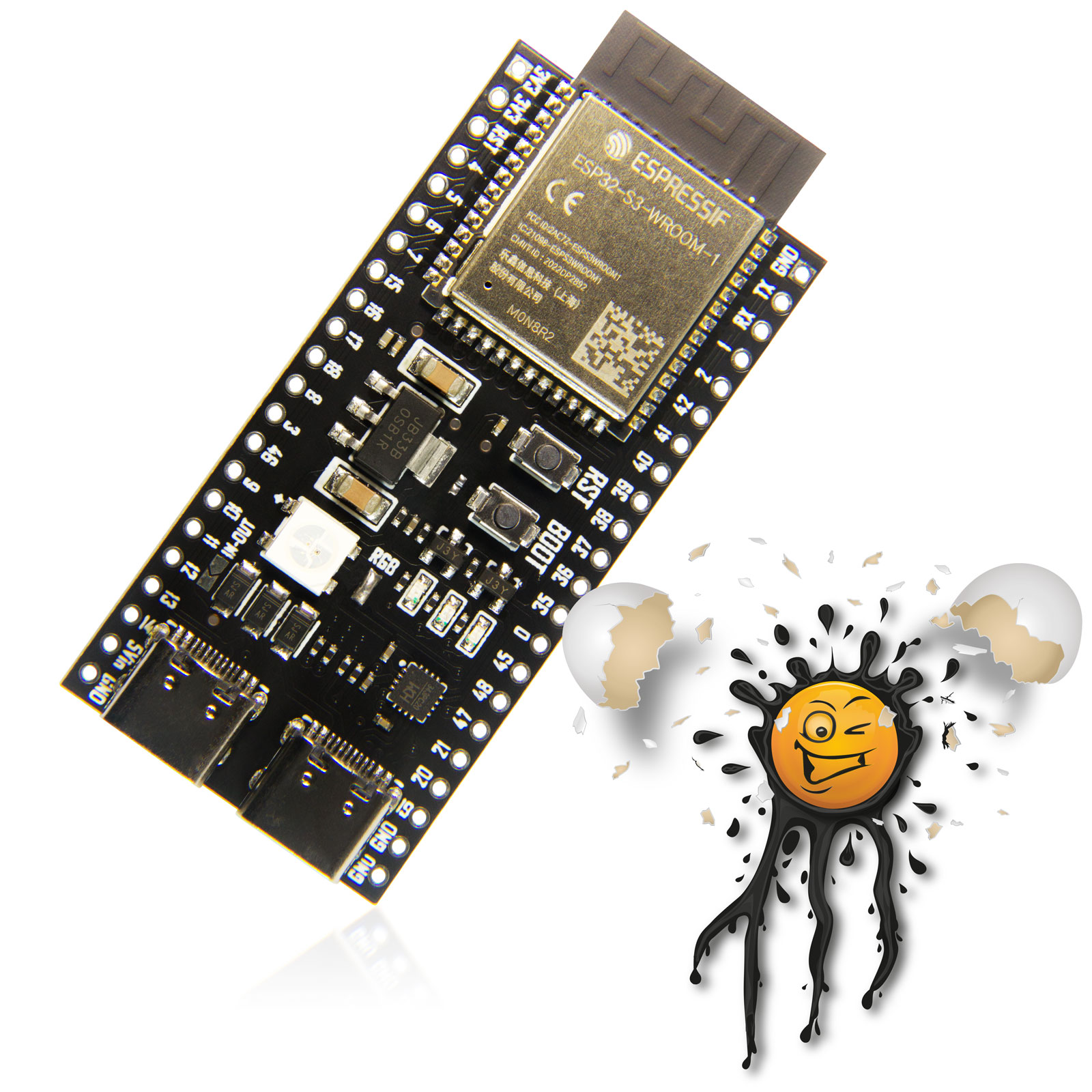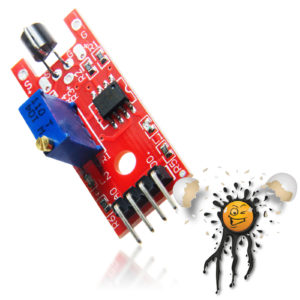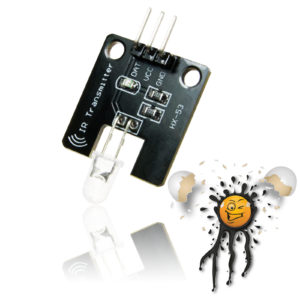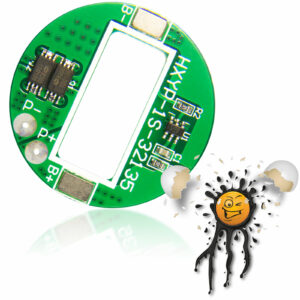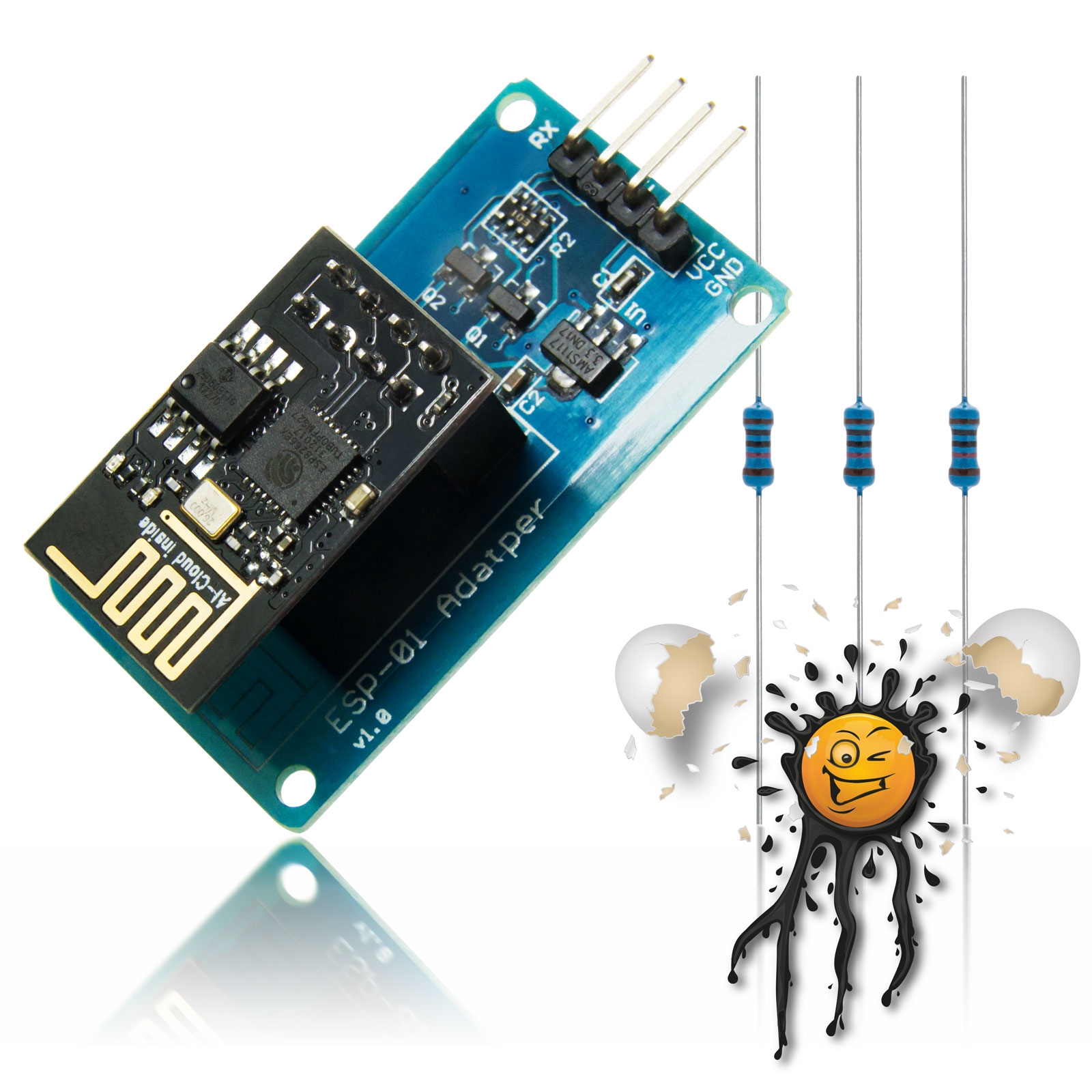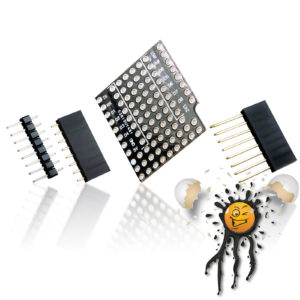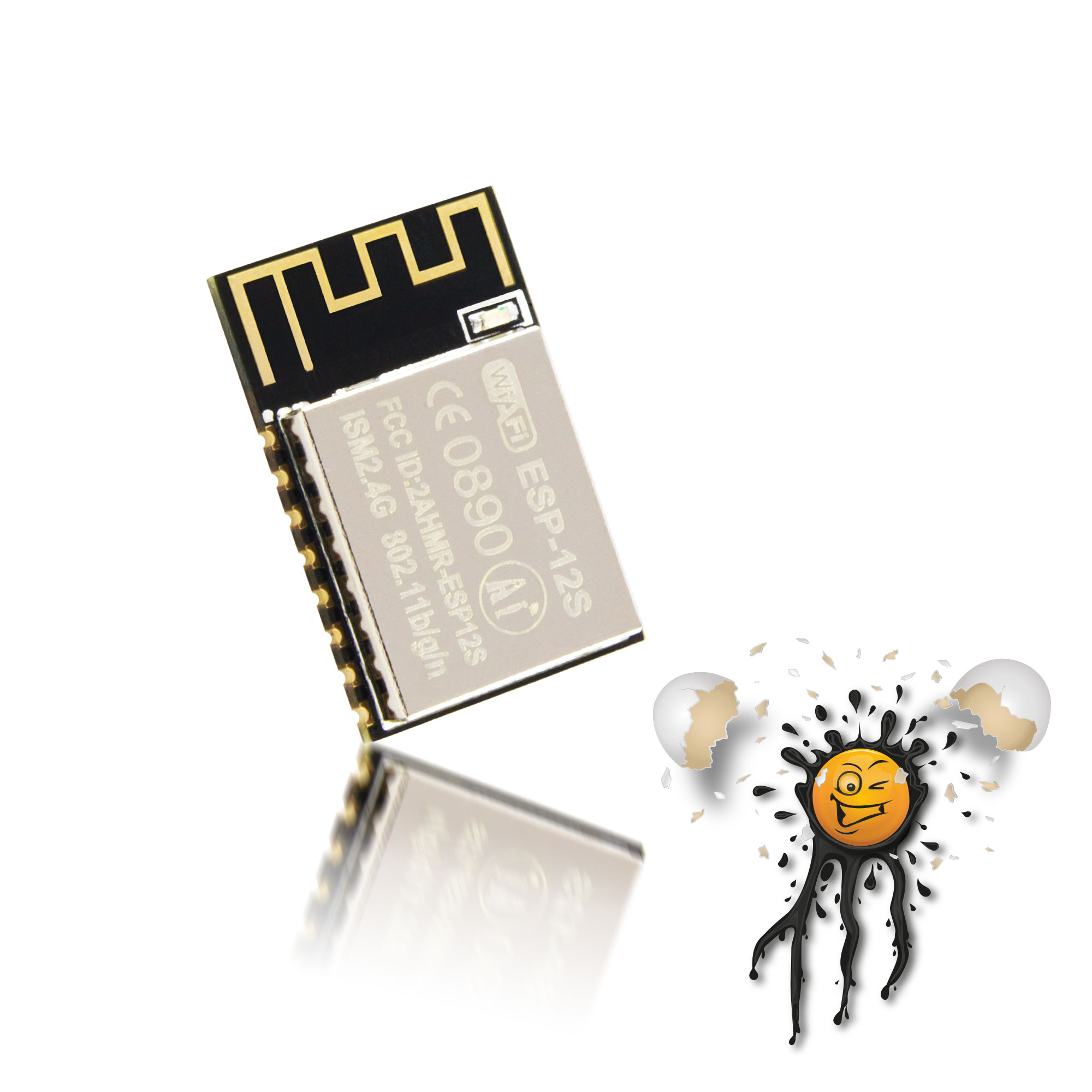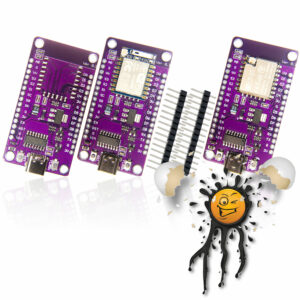|
ESP32-S3 VCC-GND dual USB-C Development Board © androegg
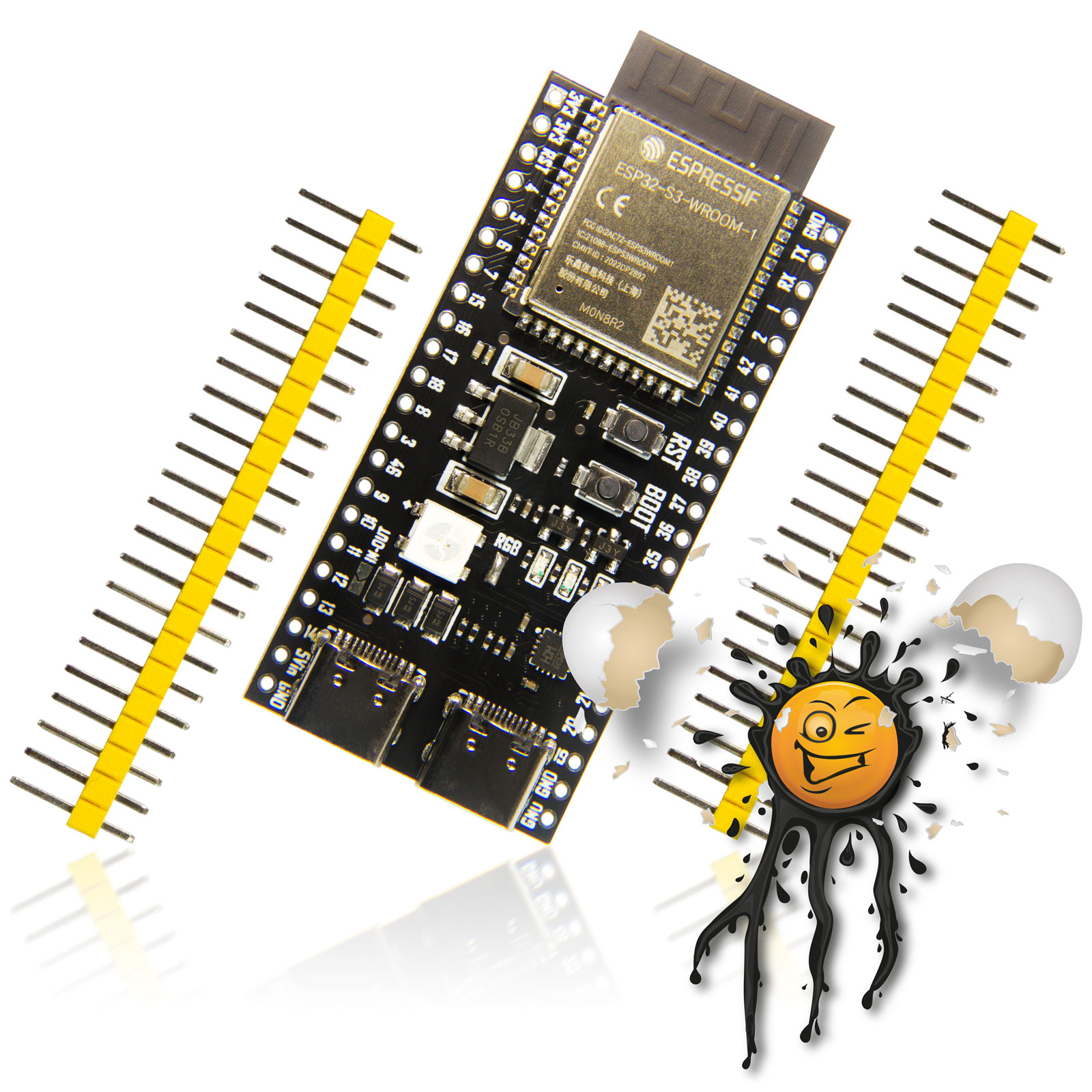
|
|
ESP32-S3 Entwicklerboard wie folgt verfügbar:
- ESP32-S3 N8R2 mit 8MB Flash und 2MB PSRAM
- ESP32-S3 N16R8 mit 16MB Flash und 8MB PSRAM
ESP32-S3 dual USB-C Entwicklerboard von VCC-GND basiert auf der Espressif ESP32-S3 MCU.
Das ESP32-S3 eignet sich für
- Espressif ESP-IDF SDK
- Python
- Python Thonny
Ferner wird seitens VCC-GND eine bereits kompilierte Firmware für das ESP32-S3 Entwicklerboard zum freien Download angeboten.
Das ESP32-S3 Entwicklerboard basiert auf der Xtensa® Dual Core 32bit MCU mit bis zu 240MHz. wahlweise in Kombination mit einem
- 8MB SPI Flash Speicher und 2MB PSRAM
- 16MB SPI Flash Speicher und 8MB PSRAM
ESP32-S3 Entwicklerboard
Im Vergleich zu typischen ESP32 Entwicklerboards verfügt dieses ESP32 -S3 Entwicklerboard über 2 USB-C Buchsen.
Die generelle Spannungsversorgung erfolgt dabei über eine integrierte USB-C Schnittstelle.
Ferner verfügt das ESP32-S3 Entwickler Board über eine CH343 USB TTL Konverter, sodass eine direkte, serielle Kommunikation über die USB Schnittstelle erfolgen kann.
Das ESP32-S3 Entwickler Board unterstützt
- 802.11 b/g/n Standard
- HT40 WLan Transceiver
- Bluetooth bis 4.2
- Takfrequenz 240MHz
- SRAM 512kBytes
- 2MB PSRAM
- 8MB SPI Flash
- bis zu 45 GPIO
- unterstützte Schnittstellen
SPI SD Karte,
UART,
SPI,
SDIO,
I2C,
LED PWM,
Motor PWM,
I2S,
IR,
pulse counter,
GPIO, capacitive touch sensor,
ADC 12-bit (bis zu 20 Kanäle),
DAC,
Two-Wire Automotive Interface (TWAI®), compatible with ISO11898-1 (CAN Specification 2.0)
|
ESP32-S3 Development Board available:
- ESP32-S3 N8R2 with 8MB Flash and 2MB PSRAM
- ESP32-S3 N16R8 with16MB Flash and 8MB PSRAM
ESP32-S3 dual USB-C development board from VCC-GND is based on Espressif ESP32-S3 MCUS.
The ESP32-S3 Development Board supports
- Espressif ESP-IDF SDK
- Python
- Python Thonny
There is also VCC-GND a binary Firmware from VCC-GND available.
The ESP32-S3 Development Board is based on Xtensa® Dual Core 32bit MCU with up to 240 MHz. in combination with a
- 8MB Flash and 2MB PSRAM
- 16MB Flash and 8MB PSRAM
ESP32-S3 Development Board
Compared to typical ESP32 Development Boards, this ESP32-S3 Development Board has two USB-C Socket Connector.
The 5V main power supply is supported thru USB-C Socket.
For serial communication the ESP32 S3Development Board got also a CH343 USB TTL Converter on board (connected to USB-C Socket)
The ESP32-S3 Development Board supports
- 802.11 b/g/n Standard
- HT40 WLan Transceiver
- Bluetooth up to 4.2
- Frequency 240MHz
- SRAM 512kBytes
- 2MB PSARM
- 8MB SPI Flash
- up to 45 GPIO
- supported Interfaces
SPI SD Karte,
UART,
SPI,
SDIO,
I2C,
LED PWM,
Motor PWM,
I2S,
IR,
pulse counter,
GPIO, capacitive touch sensor,
ADC 12-bit (up to 20 channels),
DAC,
Two-Wire Automotive Interface (TWAI®), compatible with ISO11898-1 (CAN Specification 2.0)
|
ESP32-S32 Development Board Features:
- 5V Power Supply thru USB-C Connector
- Dual USB-C (OTG, UART)
- CH343 USB TTL Converter on board
- supports up to 45 GPIO
- CPU / MPU:
Frequency: up to 240 MHz. based on Tensilica LX7
448 KByte ROM size
520 KByte SRAM size
2 or 8MB PSRAM
- SPI Flash:
Flash memory: 8 or 16MB
clock frequency: 75 MHz.
Page program: up to 256 bytes in 0.64ms (TYP) Sector erase: 512Kb in 0.6s
Bulk erase: 17 – 23 s
Hardware write protection: protected area size defined by nonvolatile bits BP0, BP1, BP2
Deep power-down: 1μA (TYP)
Write Cycles: > 100,000 write cycles per sector Data retention: > 20 Years
- 802.11 b/g/n/e/i protocol
- supports Wi-Fi Direct (P2P)
- soft-AP Integrated TCP/IP protocol stack
- 802.11 n (2.4 GHz), up to 150 Mbps
- 802.11 e: QoS for wireless multimedia technology
- Block ACK
- Fragmentation and defragmentation
- Automatic Beacon monitoring/scanning
- 802.11 i security features: pre-authentication and TSN
- Wi-Fi Protected Access (WPA)/WPA2/WPA2-Enterprise/Wi-Fi Protected Setup (WPS)
- Infrastructure BSS Station mode/SoftAP mode Wi-Fi Direct (P2P), P2P Discovery, P2P Group Owner mode and P2P Power Management
- UMA compliant and certified
- Antenna diversity and selection
- Compliant with Bluetooth v4.2 BR/EDR and BLE specification
- deep sleep current of < 2.5uA
- Class-1, class-2 and class-3 transmitter without external power amplifier
- Enhanced power control
- +10 dBm transmitting power
- NZIF receiver with -98 dBm sensitivity
- Adaptive Frequency Hopping (AFH)
- Standard HCI based on SDIO/SPI/UART
- High speed UART HCI, up to 4 Mbps
- BT 4.2 controller and host stack
- Service Discover Protocol (SDP)
- General Access Profile (GAP)
- Security Manage Protocol (SMP)
- Bluetooth Low Energy (BLE)
- ATT/GATT
- HID
- All GATT-based profile supported
- SPP-Like GATT-based profile
- BLE Beacon
- A2DP/AVRCP/SPP, HSP/HFP, RFCOMM
- CVSD and SBC for audio codec
- Bluetooth Piconet and Scatternet
|


